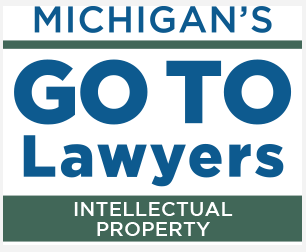Intellectual Property Insights from Fishman Stewart
Mini Article – Volume 22, Issue 7
Share on Social

Art is anything you can get away with…with limitation
When one thinks of Andy Warhol, they can’t help but visualize a painting of “Campbell’s Soup Cans”, a trippy image of Marilyn Monroe, or a colorful portrait of Mao Zedong. The use and manipulation of well-known images or icons has always gone hand-in-hand with this master of pop art. Warhol lived by the philosophy that “art is anything you can get away with,” and there is a new case challenging that statement.
The U.S. Supreme Court recently granted the Andy Warhol Foundation’s petition to hear its lawsuit regarding the late artist’s series of paintings of the musician Prince. Allegedly, Warhol created a series of paintings that incorporated a photograph without the permission of the photographer. The photographer, and owner, of the photograph’s copyright filed infringement claims based on Warhol’s unauthorized use. The Supreme Court’s decision could dramatically impact contemporary artists and the art we currently consume.
The heart of the case involves a commonly raised defense to allegations of copyright infringement called “fair use.” Under U.S. copyright law, fair use permits unlicensed use of a copyrighted work for certain purposes, such as educational , news reporting, research, and others. Moreover, fair use includes protection for “transformative use” when the unlicensed user takes the copyrighted work and adds something new that alters the purpose or character of the original work, and in doing so creates a critique, parody, or other altered form of expression. The Warhol case, which will be heard this fall by the Supreme Court, turns on this issue of transformative fair use.
In 1981, while on assignment for Newsweek, photographer Lynn Goldsmith captured images of Prince, which were never subsequently published. In 1984, Vanity Fair commissioned Warhol to create a pop art recreation of one of these photos. Warhol used the photograph to create the “Prince Series” — a set of high-contrast images infused with dramatic pops of color in a style similar to that of his “Campbell’s Soup Cans“.
Fast forward to 2017, Goldsmith objected to this use of the photograph, and a federal law suit resulted, with Goldsmith claiming copyright infringement and the Warhol Foundation arguing that the Prince Series did not infringe and constituted a fair use of Goldsmith’s photograph. The lower court sided with the Warhol Foundation. Goldsmith appealed, and the decision was reversed in favor of Goldsmith.
Now, the Supreme Court will hear each side’s argument and make its own determination. By taking up this case, the Supreme Court has the difficult and complex task of balancing the tension between protecting original works (such as a news photograph) and the freedom to create therefrom inspired works (of the type created by Warhol in this case) under the protective umbrella of transformative fair use.
It is often said that, in art, you are either the artist or the muse. So, where is the boundary between inspiration and infringement? For now, we can only wait and see where the Court will draw that line. I, for one, will be reading the briefs with a can of Campbell’s soup at the ready, and Prince’s Purple Rain playing in the background.
Published April 8, 2022


Related Content from Fishman Stewart
In a recent decision, the U.S. Court of Appeal for the Eighth Circuit affirmed a jury verdict holding that the use of the "Success Kid" meme by a congressman's reelection campaign for fundraising purposes did not qualify as fair use.
In February 2024, proposed legislation was introduced in US House of Representatives which would extend copyright protection to golf courses. The bill is titled “Bolstering Intellectual Rights against Digital Infringement Enhancement Act” or the “BIRDIE Act”.
June is Pride Month, which honors the 1969 Stonewall Uprising in Manhattan and recognizes the impact that lesbian, gay, bisexual, and transgender (LGBTQ+) individuals have had on history locally, nationally, and internationally. The United States Patent and Trademark Office flies the Pride Flag and promotes the Pride community’s contributions with programming offered annually.
June is Pride Month. This year we are celebrating with some IP tips for drag performers! Drag performers can protect their intellectual property by registering the copyrights in their original works of music, choreography, and comedy sketches.
You’re rarely more than a few yards from Finny’s favorite chips, semiconductor chips to be precise. But what exactly is a semiconductor chip?
"May the 4th Be With You," also known as Star Wars Day, takes place annually on May 4th. The phrase is a pun on the iconic Star Wars catchphrase "May the Force be with you."
First, a big “thank you” to all our readers who have given feedback on our newsletter. We appreciate your interest and insights. It is always a treat to hear from you! Second, we wanted to provide you with updates on some of our most popular articles
“Palworld”— a computer game created and published by Japanese developer Pocket Pair. Released as an early access game in January 2024, it sold over seven million copies on the computer platform Steam in the first five days and had nearly 20 million players in the first two weeks.
This year’s Super Bowl featured a thrilling overtime victory for the Kansas City Chiefs over the San Francisco 49ers. With estimates as high as 123 million viewers, America's premier sporting event also serves as a grand stage for creativity and intellectual property protections that enhance the game’s success.
Valentine’s Day is just around the corner and jewelry sales are usually around $6 billion USD in the United States alone. In 2021, the US Customs and Border Protection agency seized over $1 billion USD worth of counterfeit pieces of jewelry.
IDENTIFYING, SECURING AND ADVANCING CREATIVITY®











